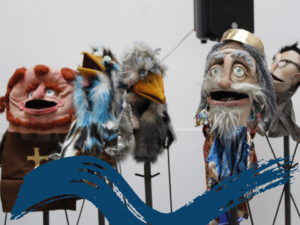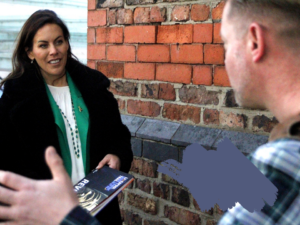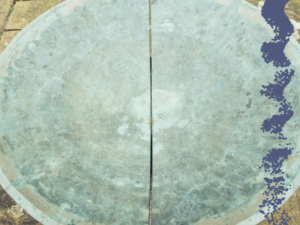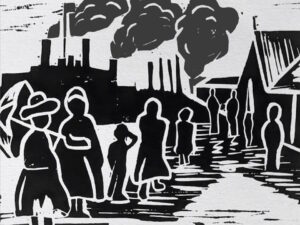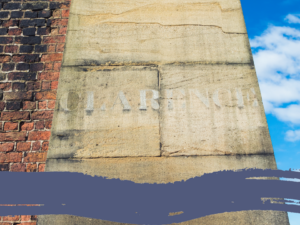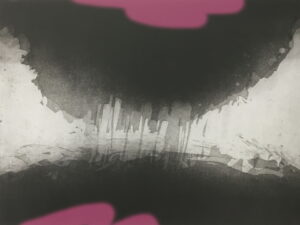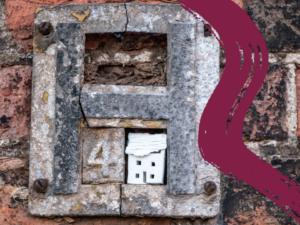
As a celebration of our 21st birthday, we’ve commissioned Pamela Sullivan to create objects that celebrate important anniversaries. Using the ‘hide-and-seek’ approach we used last year, with The Forgotten, members of the public will be able to hunt, locate and report their finding of specially created, one off art pieces. Below, Pam tells us why giving art away is important to her.
Article contents
Examples
The idea of artists giving away their art is nothing new. You can look back to Van Gogh famously exchanging a painting for his lunch. Picasso drew a dove on a napkin, so a young couple could pay their bill. You could argue Banksy gives his art away for free, until it’s hacked off its wall and sold at auction to the highest bidder.
Why do I do what I do?
As I reach my mid-fifties, I find myself reflecting on my practice. I doubt and support myself, often in equal measure, asking myself why I do what I do? I’m not alone. Many artists and creatives do this; some spend no time at all on introspection, whilst others do it to distraction.
In the parlance of Arts Council England, I’m a mixed heritage, mid-career, female artist. The main earner during my childhood was my nan. She was a cleaner. I assume that makes me working class. So, why do I draw, paint, create things and place them in the public realm, giving my art away to complete strangers? I’ve tried to intellectualise why, on many occasions, but -in reality- it’s just something I do. Nothing more than that.
I, (re)Boot
At the start of summer, I broke my ankle and found myself with lots of time on my hands. I’d planned to clean my house, organise my art materials and perhaps even create some new work. Of course, I did none of this! I sat with my big boot on watching Netflix and Sky documentaries.
In my defense, I went on ‘a deep dive’. I watched programmes about art and what it means. I poured over the ancient histories of lost civilisations; considered the recklessness and the avarice, the beauty and the corruption. Every last documentary and article I read could be reduced to one thing: we need to leave our mark, let others know that we were there and that we mattered.
Recommended
Three documentaries stood out, leaving an indelible mark and capturing my imagination:
- Unknown: Cave of Bones (Netflix) tracks a research team across 8-years, discovering our oldest human ‘like’ ancestors
- The BBC’s, Oceans Apart: Art in the Pacific with James Fox
- Nan Goldin’s stunningly beautiful and haunting film, All the Beauty and the Bloodshed, available on iPlayer.
These three, from the raft I watched, have stayed with me. Covering very different themes, they all come back to the need for people to make and leave their mark. A need to document, inform, warn, create and leave a pictorial history. From cave walls, deep burial chambers, pyramids, churches, galleries and museums, through to today, where art is displayed on bodies, street corners, walls and derelict buildings.
All these marks share an idea. Nan Goldin, in particular, documented her life and made a stand against the corrupt pharmaceutical culture in the USA. She talks -and worries- about destroying her career, but felt she had to make a stand. She did so by confronting the very galleries that displayed her work. Nan was driven by an innate and ineffaceable need to do the right thing.
Social conscience
Throughout my career, I’ve created work with a social conscience. I always have something to say and I always need to say something. I can’t just let this world with its unfairness and inequalities pass me by.
The Free Art Friday Movement is nothing new. In its current form, it emerged as a kick back against ‘Black Friday’ and the abhorrent consumerism that came with it. Artists -all around the world- produce and place free art on the street for anyone and everyone to find. These acts of giving, place a little piece of creativity in to a world where art works are seen as a commodity only the very wealthy and privileged can afford.
This is the act of artists making their mark and sharing an idea. By giving it away in thoughtful and self-managed ways, artists take back their art by giving it to those who may never have previously engaged with an art gallery (or an artist) before. This small act of kindness feels powerful and important in an era of greed and coldness.
The Forgotten
I was proud to be part of last year’s Liverpool Irish Festival. I was commissioned to produce a series of small porcelain houses for people to find and take home. These little pieces of art commemorated -and reminded people- of the Irish famine. The houses embodied the strength of the Irish people and their resilience in the face of incredible hardships. I made a mark that represented this idea and shared it across the city.
2023
For this year’s Festival, I will again create some small pieces of art and I will leave them out for members of the public to find. This year each piece will commemorate the people, events anniversaries that have happened in Ireland and Liverpool, celebrating the Festival’s last 21-years and commemorating it gaining its ‘key-to-the-door’.
Though we’re keeping the details under wraps for now, these iconic little pieces will certainly capture people’s imaginations. With them, I’ll be making my mark and sharing my belief that: art is important and available for anyone who wants to find it.
Each piece will bear a QR code. Please scan it and send us your story. We’ll want to know how and where you found the piece; how did you come to be in the area and who you’ll share it with.
Happy Hunting!
Pamela Sullivan, 2023.
To follow Pamela, visit Facebook @pamela.sullivan.547 or Instagram @pamelasullivanartist.


